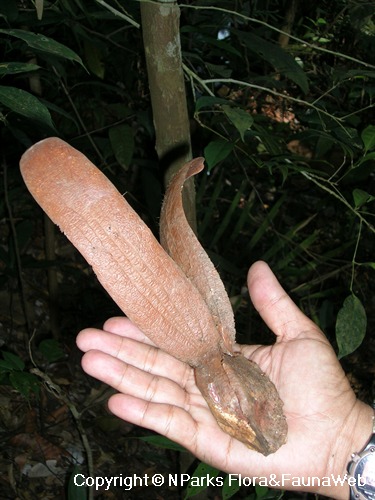
Name
Classifications and Characteristics
| Plant Division | Angiosperms (Flowering Seed Plants) |
|---|---|
| Plant Growth Form | Tree (Big (>30m)) |
| Mode of Nutrition | Autotrophic |
Biogeography
| Native Distribution | Indonesia, Malaysia and Singapore |
|---|---|
| Native Habitat | Terrestrial |
| Preferred Climate Zone | Tropical |
| Local Conservation Status | Native to Singapore (Endangered (EN)) |
Description and Ethnobotany
| Growth Form | A tall emergent tree. |
|---|---|
| Trunk | Bark is reddish and peeling in small flakes. |
| Foliage | Leaves are green, glabrous, ovate to elliptical (5 – 16 cm long and 3.5 – 8 cm wide) with clear venation. Leaf margin is plicate (almost like being folded) and petiole (1.4 – 3 cm long) is reddish brown. Leaf buds and stipules are very hairy on the outer surface but smooth on the inner surface. |
| Flowers | Mass flowering once every few years in an event known as "seed masting". |
| Fruit | Fruit has 5 folded ridges along the fruit case. It has 2 sepals that are enlarged (12 cm long and 3 cm wide), forming the "longer wings"; while the remaining 3 remain small (0.5 cm long and 0.7 wide). Fruit turned from reddish green to reddish brown when dried. |
| Habitat | Lowland rainforests |
| Etymology | Greek di, two; Greek pteron, wing; Greek karpos, fruit, referring to the two-winged fruit; sublamellatus refers to the wavy ridges on the fruit. "Keruing" refers to the group of large forest trees of the Dipterocarpaceae family in the Malesia region. |
| Ethnobotanical Uses | Timber & Products: The genus Dipterocarpus produces a moderately hard to hard timber that is known commercially as keruing. The wood is used for general purpose in building construction. Resin of Dipterocarpus sublamellatus is almost colourless. Cultural / Religious: Heritage Tree : There is currently one individual of Dipterocarpus sublamellatus listed as a Heritage Tree in Singapore. It can be found at Changi. To find out more about this tree, please visit the Heritage Tree Register. |
Landscaping Features
| Landscape Uses | Parks & Gardens |
|---|
Fauna, Pollination and Dispersal
| Seed or Spore Dispersal | Abiotic |
|---|
Plant Care and Propagation
| Light Preference | Full Sun |
|---|---|
| Water Preference | Moderate Water |
| Plant Growth Rate | Moderate |
| Rootzone Tolerance | Moist Soils, Well-Drained Soils |
| Propagation Method | Seed |
Foliar
| Mature Foliage Colour(s) | Green |
|---|---|
| Foliar Attachment to Stem | Petiolate |
| Foliar Shape(s) | Non-Palm Foliage (Ovate, Elliptical) |
| Foliar Venation | Pinnate / Net |
| Foliar Base | Cuneate |
Floral (Angiosperm)
| Flowering Period | Every Few Years |
|---|---|
| Flower Colour(s) Remarks | Pinkish-yellow |
Fruit, Seed and Spore
| Mature Fruit Colour(s) | Brown |
|---|
Image Repository
Others
| Master ID | 29654 |
|---|---|
| Species ID | 3963 |
| Flora Disclaimer | The information in this website has been compiled from reliable sources, such as reference works on medicinal plants. It is not a substitute for medical advice or treatment and NParks does not purport to provide any medical advice. Readers should always consult his/her physician before using or consuming a plant for medicinal purposes. |

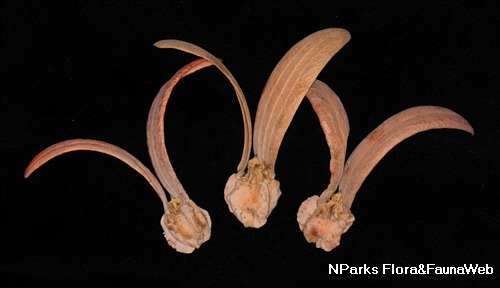
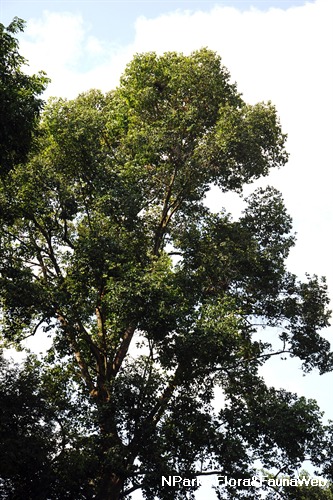
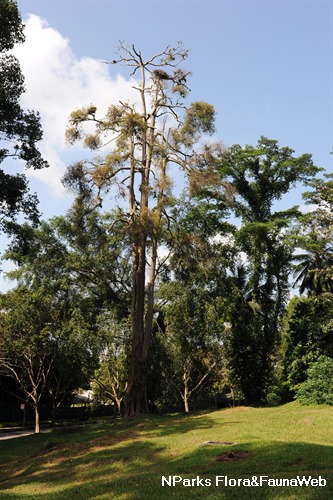
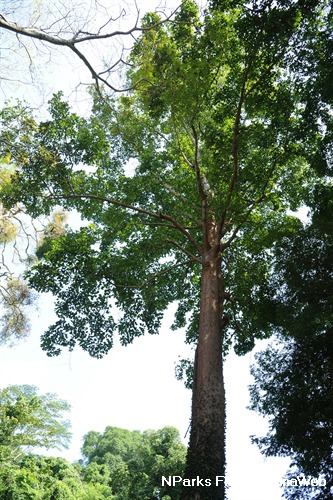
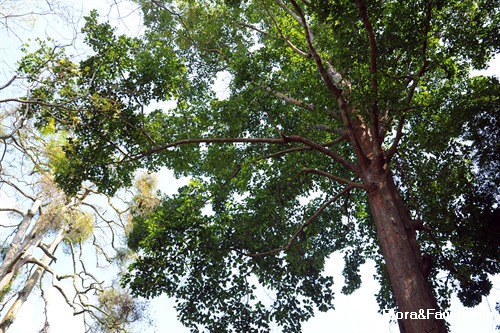
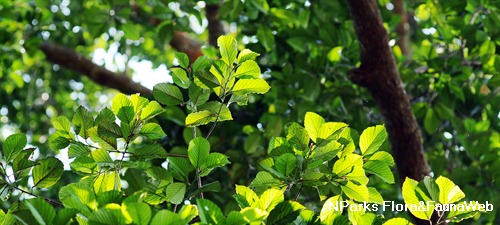
_lowres.jpg)

